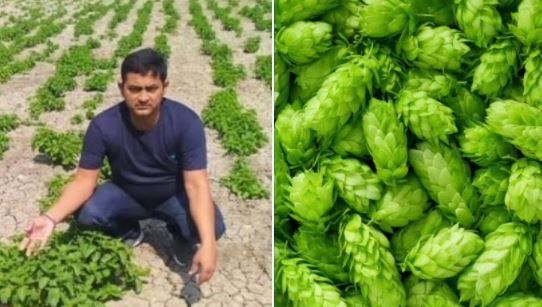New Delhi: Days after claims that a vegetable called hop shoots is being cultivated by a Bihar farmer in Aurangabad district and sold for Rs 1 lakh per kg went viral, reports have now emerged saying the entire matter was false. After a tweet by an IAS officer with two photos along with a news report, the story was widely shared on social media.
“One kilogram of this vegetable costs about ₹ 1 lakh! World’s costliest vegetable, ‘hop-shoots’ is being cultivated by Amresh Singh, an enterprising farmer from Bihar, the first one in India. Can be a game changer for Indian farmers,” IAS officer Supriya Sahu had tweeted on March 31. The tweet received over 24,000 “likes” and was retweeted over 5,000 times. Many media websites had done news reports based on the IAS officer’s tweet, including india.com.
A team from Hindi newspaper Dainik Jagran reportedly visited the Bihar village of Amresh Singh, the man at the heart of the story, on Friday, and found that no such crop was being grown there. Locals said they had never heard of such a crop being grown in the area, according to the Jagran report. When contacted on phone, Amresh Singh reportedly said the crop was was being grown in Nalanda district, about 172 km away. When the newspaper team went to Nalanda, he said the crop is in Aurangabad.
“Some officials from Patna asked about the hop shoots crop. There is no such cultivation in Aurangabad district,” Saurabh Jorwal, District Magistrate of Aurangabad, told Dainik Jagran. Amresh Singh has grown black rice and wheat in the past, but not hop shoots, Jagran report added.
So what are hop shoots?
The hop – called humulus lupulus – is a perennial plant. A native of North America and Europe, hop shoots were believed to be a weed until its properties were known. According to the website agrifarming.in, hop shoots have ”antibacterial effects” and are used for ”bittering”, ”flavouring” and as a ”stability agent in beer”.
Why are they so costly?
As per a report in The Guardian, hop shoots are ‘back-breaking to harvest’ and that is why so expensive. They are so tiny that it takes great effort and time to collect hundreds of hop shoots to fill a carrier bag.
